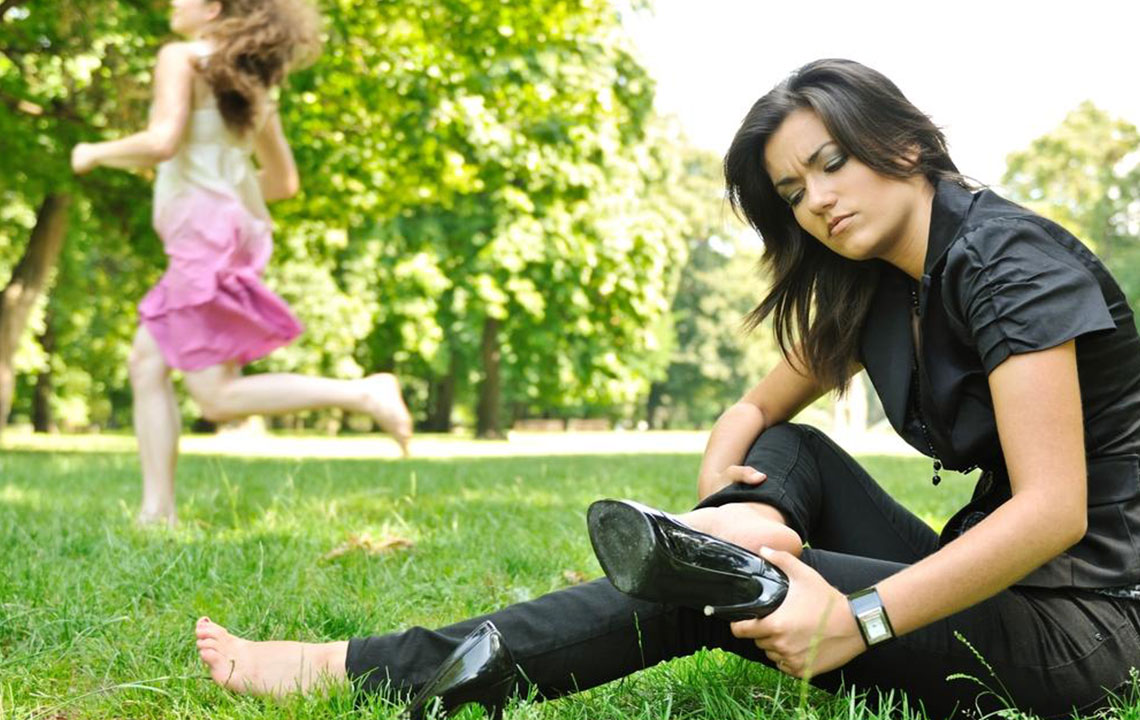Points to Consider When Choosing the Right Shoes for Heel Pain

Shoes not only add elegance to your personality but also are vital as these provide support to the feet. For people who suffer from any kind of heel pain, a pair of shoes that provide support to the entire foot can be considered as the best shoes for heel pain.
Points to consider when choosing the right shoes for heel pain
Should not twist
The risk of twisting of the feet always remains high in a shoe which is not made out of quality material. These also do not provide the much-needed flexibility which a person suffering from heel pain might require. In a shoe which twists at the heel, support to foot and heel region cannot be expected. The person wearing such shoes will not be able to walk correctly and the chances of the heel being injured are very high.
Ideally, the right shoes for heel pain removal should have a heel which is firm and the midsole twisting should be at the minimal level. Such shoes should be so designed that they are flexible at the toe end.
Should have laces
People who suffer from heel pain should not wear slip-on shoes. The shoe should ideally have laces so that it fits tightly around the foot area. If the design of the shoe is such that it has a free area to move around the feet, the chances of having heel pain increases tremendously. The sides of a slip-on shoe stretch after a few months of usage and the chances of a person hurting himself or herself increases, in case they are suffering from heel pain. The right shoes for heel pain should be tightly bound by laces does not slip much and therefore the incidence of heel pain would be reduced considerably.
Do not wear high heels
Women who suffer from heel pain should not wear high heel shoes. Such shoes put pressure on balls in the feet which lead to tightening of the calf muscles and this cause heel pain eventually. In case, high heels have to be worn for some eventuality, gel pads should ideally be used on sides of the feet balls so that the pressure on the feet is minimal. Though this will not mitigate the heel pain completely but will definitely cause a reduction in pain which otherwise can prove risky. Try to wear simple slippers which do not have a high heel for avoiding this complication completely.
Avoid flat feet shoes
Women who avoid high heel shoes owing to heel pain often end up wearing flat feet shoes. However, flat feet shoes are also equally bad as these also cause considerable heel pain. Flat shoes also do not provide any additional support to the arc of the feet and also cause additional strain in the tissues of the feet. This happens as the feet have to be lifted to a higher level while walking. It is, therefore, recommended that women should choose soft sports shoes for heel pain, and these shoes should come with some heel support.
Children and heel pain
It is not as if only adults are affected by heel pain. Children also suffer from heel pain on an equal level. As a parent, it is essential to care for the children and take appropriate curative measures if the children suffer from heel pain. Children shoes should be such that these are made to measure as every extra inch of the shoe the child is made to wear causes considerable strain on their feet and lead to help pain which might turn out to be a serious health issue with the child if it goes unreported in the initial years. To avoid these complications with children, a parent needs to choose shoes for children which offer ease and comfort while being worn, have a suitable shape which allows the child to walk comfortably, should fit properly, should offer some room for growth, and must have good foot support so that heel pain does not occur.
Shoes that offer freedom from heel pain
There is a wide range of shoes for heel pain removal available in the market which offers imminent relief from the persistent pain that remains in case appropriate shoes are not worn. These special shoes for heel pain removal have built-in cushioned areas which offer relief from heel pain. Motion controlled shoes can also be worn for getting some imminent relief from heel pain. These shoes are somewhat less flexible than normal shoes but have a thick sole which offers support to the person in the way that they do not trip over while walking on an uneven surface.
The ideal shoes for freedom from heel pain should offer adequate arch support, must not have a high heel and should bend with every step a person takes. Look out for such shoes and you will never experience heel pain.


